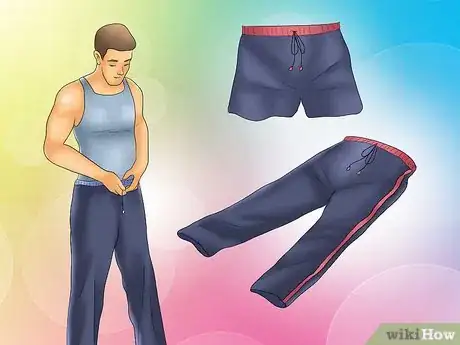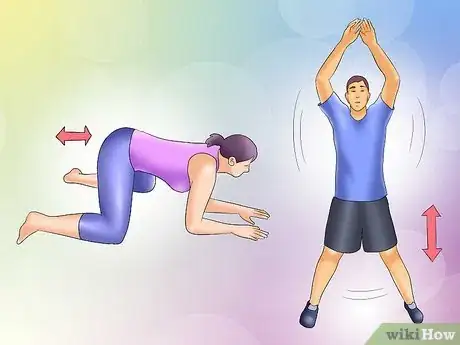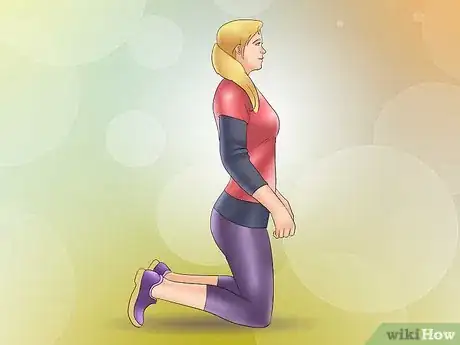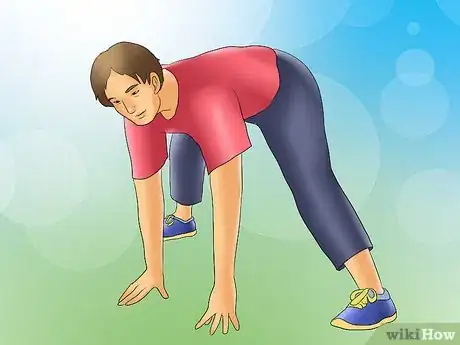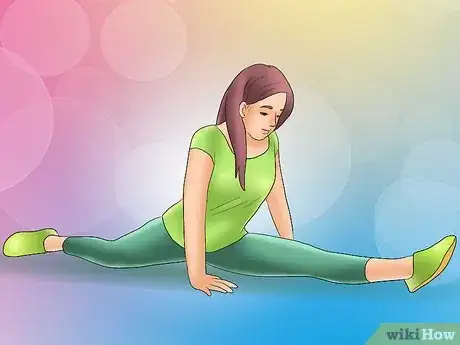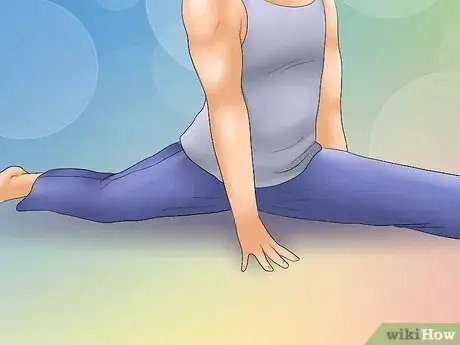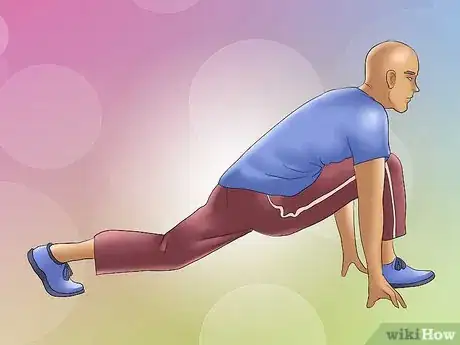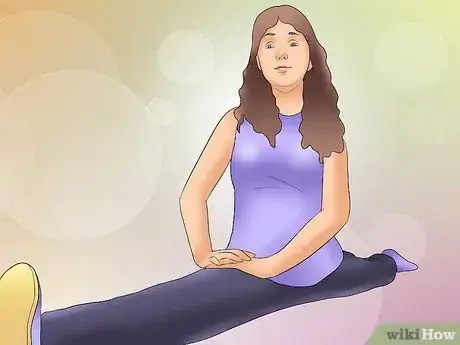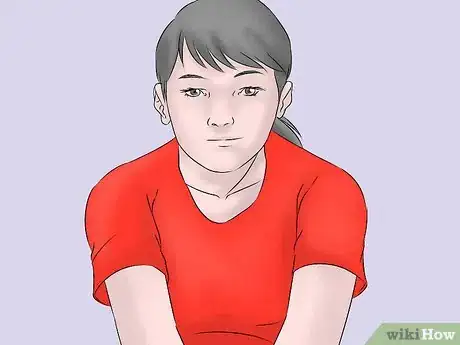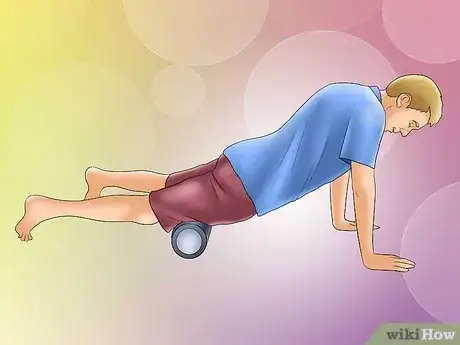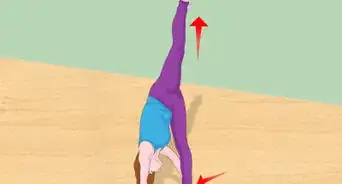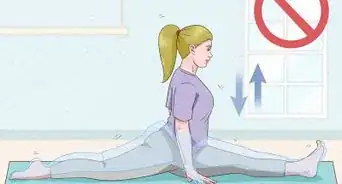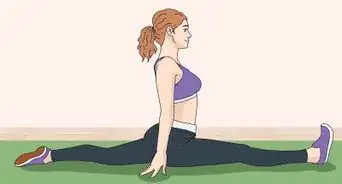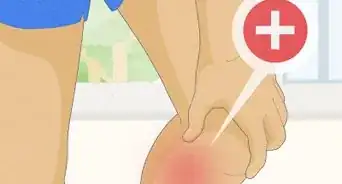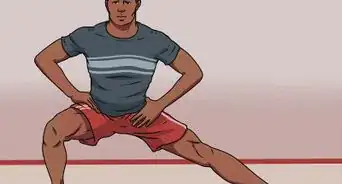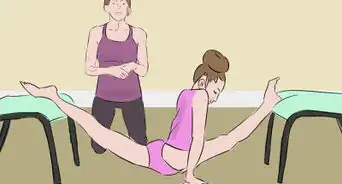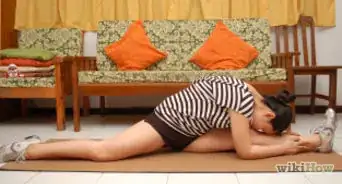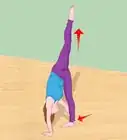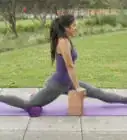This article was co-authored by Eric Christensen, DPT. Eric Christensen is a Physical Therapist based in Chandler, Arizona. With over a decade of experience, Eric works in both orthopedic and neurological fields and specializes in custom orthotic prescription and casting, vestibular reprogramming, and manual therapy. He holds a Bachelor’s degree in Exercise Science with a focus in Sports Medicine from Colorado State University and a Doctor of Physical Therapy from Regis University. In practice, Eric takes a developmental approach to rehabilitation utilizing the Selective Functional Movement Assessment. He uses functional movement patterning and manual therapy to return patients to prior levels of function.
There are 7 references cited in this article, which can be found at the bottom of the page.
This article has been viewed 167,841 times.
Flexibility provides many health benefits and helps athletic performance. Stretching helps the movement in your joints and allows your muscles to work much more effectively. Besides the health benefits, the side splits stretch is popular in such sports like gymnastics and cheerleading.
Steps
Preparation Before Doing the Side Splits
-
1Wear appropriate clothing. It has to be loose and flexible. If you wear anything too tight, then you risk it being ripped. Tight clothing can also prevent you from doing the side splits completely.
-
2Warm up. Spend 10 to 15 minutes doing light activity and get your blood going by doing jumping jacks, jogging, squats, and lunges. You want to get your blood flowing and loosen up your muscles.[1]
- Combine both cardiovascular and dynamic exercises to warm up. Start with an exercise like jumping jacks, then follow with a lunge. Cardiovascular exercises also burn excess fat and calories.
- Run on the spot or dance for at least 5 minutes to warm up.
Advertisement -
3Do stretches. Do lower back and inner thigh stretches for 10 or so minutes.
- Butterfly stretch. This stretch is mainly useful for box splits, although it increases all round leg flexibility. Sit on the floor, with your back supported, and push your feet inwards, using your elbows to push your knees down. Make sure to do this against a wall so you don't end up using your inner thighs to keep you upright.
- Pike stretch. Do this standing up and sitting down. Stand straight and touch your toes for as long as you can, keeping your legs completely vertical.
- Note that the older you are, the more difficult it is to stretch. This is because your body dehydrates as it gets older, causing the lubricants between your tissues to decrease. This means that it will take longer for you to do the splits. [2] It doesn't mean that you can't do it though; take it slowly.
Doing the Side Splits
-
1Position yourself. Go into a kneeling position while keeping your back straight. Put the leg of your choice in front of you. Straighten the front leg as much as possible. Rest your back leg on its shin.
-
2Breathe properly. Holding your breath as your stretch tightens your muscles, which makes it more difficult to perform the side splits. Breath deeply, but do not exaggerate your breathes. You want to make your breaths as natural as possible.[3]
- Inhale when you are holding the stretch. Exhale when you lean into the stretch.
-
3Go slowly. If you lower yourself into the split too fast, then you can seriously injure yourself. Find a speed that works for you.. Always ease yourself slowly into the splits.
- By going slowly, you avoid injuries. Not only will injuries prevent you from doing the stretch immediately, it can potentially prevent you from practicing for a long time.
- It’s more important to practice consistently than to attempt to do the splits fast
-
4Lower yourself. Once you are warmed up and feel relaxed, start to lower yourself very carefully. Continue going down until you feel pain or discomfort. Once you feel any major discomfort, other than the minor pain that comes from stretching, stop.
- As you lower yourself, keep your hands to your side so that you can support your body weight.
- If you feel pain after you are done with the side splits, then you forced yourself too hard into the stretch. Wait until the pain is completely gone before attempting the stretch again.
-
5Continue lowering yourself on the floor. Once your pelvis is on the floor, and your legs are at a 180-degree angle, you have achieved a side split.
- Do not bounce yourself into the side split as this could injure you.
-
6Hold the position. Once you have achieved the split, hold it for as long as you can. Start setting time limits. Try to hold it for 15 seconds, then 30 seconds. Try to work your way to a minute.[4]
- Remember to always do the splits comfortably. Do not hold the position if you feel any major discomfort.
- Straddle stretch (if wished): get into a straddle and try to touch your nose to each knee and then to the floor. Sit with one leg behind you and one leg tucked underneath you. Sit like this for a while.
-
7Come out of the splits slowly. Ease out of the stretch comfortably and gently. If you get up too quickly, you risk injuring yourself. Breath steadily as you come out and relax as much as possible.
- Cool down. Cool down by walking for 5 minutes or doing a few gentle stretches. Don't forget to cool down, or you will regret it the next day when you ache.
-
8Practice often. Practice every day unless you are sore. Try to do small sessions 2 to 3 times a day. Find the best routine for your body. If you find that you get sore consistently, try doing light practices one day and heavier practices the day after that.
Improving Your Flexibility
-
1Drink water. Hydrate your body as much as possible. Your joints and muscles need water to be flexible. If you are dehydrated, then that means your body will be much tighter and prone to cramps and spasms.[5]
-
2Cut down or quit caffeine. Caffeine is a stimulant that prevents your body from relaxing. It tenses your muscles, which makes it more difficult to perform the side splits. Some studies also suggest caffeine causes muscle inflammation.[6]
- Cut down on food with high amounts of hydrogenated oil, sugar, and trans-fats can also help in reducing inflammation.
-
3Stretch while doing other activities. Give yourself distractions to take your mind off the discomfort while your practice the splits. For instance, while watching television, practice stretching. Be careful not to let your mind get too distracted and overstretch.
-
4Take a hot bath or shower. Make sure it lasts at least fifteen minutes. This will help loosen and relax your muscles. Additionally, a hot bath or shower will increase your heart rate and core temperature.[7]
-
5Use a foam roller. Foam rollers help to relax and stretch muscles. The roller can be used to apply static pressure to sore or sensitive areas. For example, if your hamstring is sore, you roll back and forth on top of the roller for 10 to 15 seconds at a time.
Community Q&A
-
QuestionCan I learn to do these splits if I am overweight?
 Community AnswerIndeed you can. With stretching and maybe some light workouts, it is very possible.
Community AnswerIndeed you can. With stretching and maybe some light workouts, it is very possible. -
QuestionHow can I prevent my back leg from bending when I do a side split?
 Community AnswerStart slowly and hold the side split a little longer everyday. As you increase your flexibility, your body will eventually get used to the pose and your back leg will no longer bend.
Community AnswerStart slowly and hold the side split a little longer everyday. As you increase your flexibility, your body will eventually get used to the pose and your back leg will no longer bend. -
QuestionWhat can you do if your legs go in different directions when you do the splits?
 Community AnswerDo your best to keep your hips and shoulders square.
Community AnswerDo your best to keep your hips and shoulders square.
References
- ↑ http://www.fitbodyhq.com/fitness/how-to-do-the-splits/
- ↑ http://www.yoga-age.com/articles/stretching/flexibility.html
- ↑ https://stretchcoach.com/articles/how-to-do-the-splits/
- ↑ https://www.sportsrec.com/8663320/how-to-do-a-painless-split
- ↑ https://www.mayoclinic.org/healthy-lifestyle/nutrition-and-healthy-eating/in-depth/water/art-20044256
- ↑ https://www.afpafitness.com/research-articles/caffeines-hidden-dangers>
- ↑ http://www.thermospas.com/blog/should-i-warm-up-in-a-hot-tub-before-i-exercise/
About This Article
To safely do side splits, you have to work up to them slowly; otherwise, you could pull a muscle. Spend a few minutes warming up, then kneel on the floor, keeping your back straight. Put one leg in front of you, straightening it as much as possible. Inhale deeply, then slowly lower yourself to the ground as you exhale. Use your hands to help support your body weight as you push your back leg backward and your front leg forward. Once you feel any major discomfort, stop and ease back a little. Hold the position as long as you can, then relax out of it. To learn some exercises and stretches for warming up, read on!
